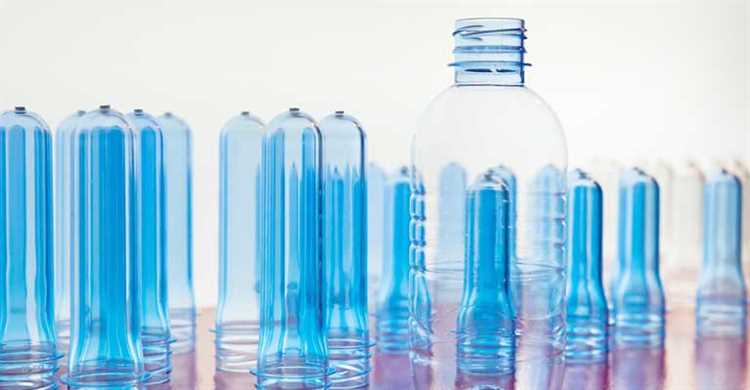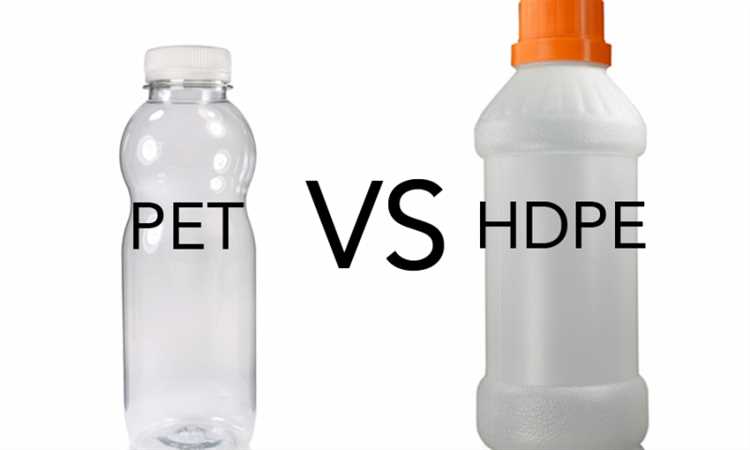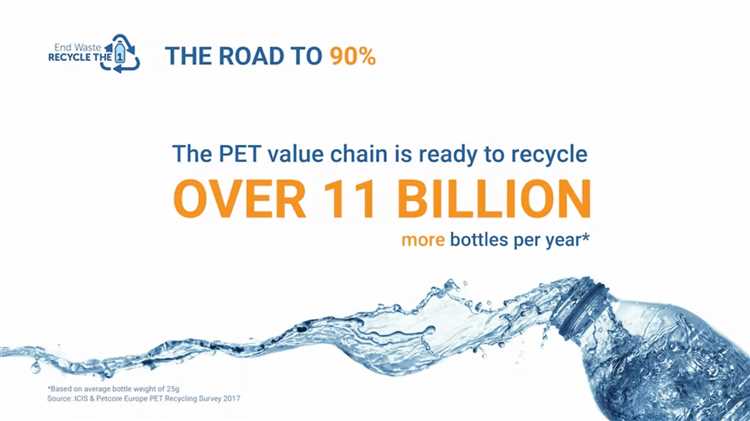
When it comes to choosing packaging materials, the decision between PET and plastic can be quite confusing. Both options have their own advantages and disadvantages, making it important to understand the differences and make an informed choice. In this article, we will explore the characteristics of PET and plastic, and discuss which option might be the better choice for your specific needs.
PET, or polyethylene terephthalate, is a type of plastic that is commonly used in packaging applications. It is known for its durability, strength, and clarity. PET is also lightweight and resistant to impact, making it an ideal choice for products that need to be protected during transportation. Moreover, PET is recyclable, making it a more environmentally friendly option compared to other types of plastic.
On the other hand, plastic, as a general term, refers to a wide range of materials that are derived from petroleum. These materials can vary in their characteristics and performance. Plastic is often used in packaging due to its versatility and low cost. However, it is important to note that not all types of plastic are recyclable, and some can have negative impacts on the environment.
In conclusion, the choice between PET and plastic ultimately depends on your specific needs and priorities. If you prioritize durability, clarity, and recyclability, PET might be the better option for you. However, if cost and versatility are your main concerns, plastic might be the more suitable choice. It is always important to consider the environmental impact and choose the option that aligns with your sustainability goals.
- PET vs. Plastic: Understanding the Difference
- The Advantages of PET
- The Drawbacks of Plastic
- Making an Informed Choice
- Environmental Impact: How PET Stacks Up Against Plastic
- Recycling
- Biodegradability
- Sustainability: Which Option is More Eco-Friendly?
- PET: A More Sustainable Material
- The Environmental Impact of Plastic
- Functionality: Comparing PET and Plastic Performance
- Strength and Durability
- Transparency and Clarity
- Cost and Availability: Evaluating the Price and Accessibility
- Making the Choice: Factors to Consider When Choosing Between PET and Plastic
- 1. Environmental Impact
- 2. Product Compatibility
- 3. Cost
- Q&A:
- What is the difference between PET and plastic?
- Is PET a better option for the environment compared to other plastics?
- Are there any disadvantages to using PET?
- What are some alternatives to PET?
- Is PET safe for food and beverage packaging?
PET vs. Plastic: Understanding the Difference
When it comes to choosing between PET and other types of plastic, it’s important to understand the difference. While PET is a type of plastic, not all plastics are PET. PET stands for polyethylene terephthalate, which is a thermoplastic polymer resin. It is commonly used for packaging because of its unique properties.
The Advantages of PET
PET offers several advantages over other types of plastic. First, it is highly transparent, allowing consumers to easily see the product inside the packaging. This is especially important for food and beverages, as it allows consumers to see the quality of the product before making a purchase.
Second, PET is lightweight yet strong, making it an ideal choice for packaging. It is resistant to impact and shattering, which helps protect the product during transportation and handling. Third, PET is recyclable, making it a more sustainable option compared to other plastics. It can be recycled into new PET products or used to produce a variety of other products, such as textiles and carpet fibers.
The Drawbacks of Plastic

While PET offers numerous benefits, it’s important to understand the drawbacks of plastic. One of the main concerns with plastic is its environmental impact. Plastic waste is a major issue worldwide, with significant amounts ending up in landfills or the ocean. Plastic also takes a long time to degrade, contributing to pollution and harming wildlife.
Additionally, not all types of plastic are recyclable. Some plastics, such as PVC (polyvinyl chloride), pose challenges in the recycling process due to their chemical composition. This makes it difficult to properly dispose of certain types of plastic and contributes to the overall plastic waste problem.
Making an Informed Choice
When choosing between PET and other plastic options, it’s important to consider the specific application and environmental impact. While PET offers advantages such as transparency, strength, and recyclability, it’s crucial to properly recycle and dispose of plastic to minimize its negative impact on the environment. Consider opting for products made from recycled PET or exploring alternative packaging materials, such as biodegradable options, to further reduce your environmental footprint.
| PET | Other Plastics |
|---|---|
| Transparent | May not be transparent |
| Lightweight and strong | Varies in strength |
| Recyclable | May not be recyclable |
Environmental Impact: How PET Stacks Up Against Plastic
When it comes to choosing between PET and traditional plastic, one of the most important factors to consider is their environmental impact. Both materials have their pros and cons, and understanding the differences can help make an informed decision.
Recycling
One major advantage of PET is its high recyclability. PET can be easily collected, sorted, and recycled into new products. In fact, PET is one of the most commonly recycled plastics worldwide. On the other hand, traditional plastic, like polyethylene and polypropylene, is more challenging to recycle due to its composition and the presence of additives.
Moreover, the recycling process for PET is energy-efficient and produces less greenhouse gas emissions compared to traditional plastic. This means that choosing PET over plastic can contribute to reducing carbon footprints and combating climate change.
Biodegradability
Another significant environmental aspect to consider is the biodegradability of the materials. PET is not biodegradable and can persist in the environment for hundreds of years. This can lead to littering and pollution, especially in marine ecosystems where plastic waste is a severe issue.
In contrast, some types of traditional plastic, such as compostable plastics, are designed to break down more quickly under specific conditions like industrial composting facilities. However, it’s crucial to note that these biodegradable plastics require specific conditions to decompose properly and may still contribute to pollution if not disposed of correctly.
| PET | Plastic | |
|---|---|---|
| Recyclability | Highly recyclable | Challenging to recycle |
| Biodegradability | Non-biodegradable | May be biodegradable under specific conditions |
Overall, PET has a more positive environmental impact compared to traditional plastic. Its high recyclability and lower greenhouse gas emissions make it a more sustainable choice. However, it’s important to note that reducing overall plastic consumption and promoting alternative materials is the best way to mitigate the environmental impact of both PET and plastic.
Sustainability: Which Option is More Eco-Friendly?
When it comes to sustainability and being eco-friendly, it is important to consider the environmental impact of different materials. In the case of choosing between PET (polyethylene terephthalate) and plastic, one must evaluate which option is more sustainable.
PET: A More Sustainable Material
PET, a type of polyester, is widely recognized as a more sustainable option compared to traditional plastics. It is derived from non-renewable resources such as crude oil, but it has a significantly lower carbon footprint compared to plastic production.
PET can be recycled multiple times, and recycling PET consumes less energy and releases fewer greenhouse gases compared to the recycling of other plastics. Its ability to be efficiently and effectively recycled reduces the amount of waste that ends up in landfills or oceans, thus reducing environmental pollution.
In addition to its recyclability, PET also has a lower weight compared to plastic, resulting in less energy consumed during transportation. This weight reduction not only decreases fuel consumption but also contributes to reducing carbon emissions in the atmosphere, making PET a more eco-friendly option.
The Environmental Impact of Plastic

Plastic, on the other hand, is known for its detrimental impact on the environment. It is derived from fossil fuels, which are finite resources, and the extraction and processing of these fuels contribute to air and water pollution.
Plastic is non-biodegradable and takes hundreds of years to decompose. As a result, it accumulates in landfills and oceans, causing harm to wildlife and marine ecosystems. The production and disposal of plastic also contribute to greenhouse gas emissions and contribute to the global climate crisis.
Furthermore, the recycling of plastic is challenging and often results in downcycling, where the quality and value of the material degrade with each recycling cycle. This leads to a higher demand for virgin plastic production, exacerbating the environmental issues associated with plastic.
Conclusion
Considering the environmental factors, PET offers a more sustainable and eco-friendly option compared to plastic. Its recyclability, lower weight, and lower carbon footprint make it the better choice for those concerned about reducing waste and minimizing their ecological impact.
It is crucial to be mindful of our material choices and make decisions that prioritize the health of our planet for future generations.
Functionality: Comparing PET and Plastic Performance
When it comes to functionality, both PET (Polyethylene Terephthalate) and plastic have their own advantages and drawbacks. Let’s take a closer look at how they perform in different areas.
Strength and Durability
PET is known for its exceptional strength and durability. It is a rigid material that can withstand impact and pressure without breaking. This makes it an ideal choice for packaging products that require protection during transportation and storage. Plastic, on the other hand, can be more flexible and prone to breaking or cracking under stress. It may not be the best option for heavy-duty applications.
Transparency and Clarity
When it comes to transparency, both PET and plastic can offer good clarity. However, PET has an advantage in terms of maintaining its clarity over time. It is less prone to yellowing or becoming hazy when exposed to sunlight or other environmental factors. Plastic, in comparison, may lose its transparency over time and may require additional additives or coatings to maintain its clarity.
Chemical Resistance
PET exhibits excellent chemical resistance, making it suitable for packaging products that may come into contact with certain chemicals or solvents. It is less likely to react with these substances or transfer any unwanted flavors or odors to the product. Plastic, depending on its composition, may have varying degrees of chemical resistance. Some plastics may not be suitable for certain types of products due to the risk of chemical interactions.
Conclusion:
In terms of functionality, PET generally outperforms plastic in terms of strength, durability, and chemical resistance. It is a reliable choice for packaging applications where these properties are important. However, plastic may still have its uses in certain applications where flexibility or cost-effectiveness is more crucial. Ultimately, the choice between PET and plastic depends on the specific needs and requirements of the product being packaged.
Cost and Availability: Evaluating the Price and Accessibility
When it comes to choosing between PET and plastic materials, one important factor to consider is the cost and availability of these options. The cost of the material can have a significant impact on the overall production and manufacturing expenses, while availability determines how easily these materials can be sourced.
PET, or polyethylene terephthalate, is a material that is widely available and relatively inexpensive. It is commonly used in the production of items such as beverage bottles, food containers, and even clothing. Due to its popularity and widespread use, PET is readily available in the market, making it easy to source for manufacturers.
On the other hand, plastic materials encompass a wide range of materials, including PVC, HDPE, and LDPE, among others. The cost and availability of plastic materials can vary greatly depending on the specific type. Some plastics may be more expensive or difficult to source due to limited availability or specialized production processes.
When evaluating the price and accessibility of PET and plastic, it is important to consider the specific needs and requirements of the project. If cost is a major consideration, PET may be the more economical choice due to its widespread availability and lower price point. However, if a specific type of plastic material is a better fit for the project, it may be worth the extra cost or effort to source it.
In conclusion, when choosing between PET and plastic, the cost and availability of the materials play a crucial role. PET offers a cost-effective and easily accessible option, while plastic materials can vary in terms of cost and availability. Ultimately, the best choice will depend on the specific needs and priorities of the project.
Making the Choice: Factors to Consider When Choosing Between PET and Plastic
When it comes to packaging materials, two commonly used options are PET (Polyethylene Terephthalate) and plastic. Both materials have their own advantages and disadvantages, making the choice between them an important consideration for businesses and consumers alike. Here are a few key factors to consider when making the decision:
1. Environmental Impact
One of the most significant factors to consider is the environmental impact of the materials. PET is considered to be more environmentally friendly compared to traditional plastic. PET is a recyclable material, and when recycled properly, it can be used to produce new PET products. On the other hand, plastic is not as easily recyclable and can have a more negative impact on the environment.
2. Product Compatibility
Another crucial factor to consider is the compatibility of the material with the product being packaged. PET is known for its excellent barrier properties, making it a popular choice for packaging food and beverages. It helps to maintain the freshness and integrity of the product. Plastic, on the other hand, may not provide the same level of protection and could potentially interact with certain products, affecting their quality.
3. Cost
Cost is always an important factor to consider in any decision-making process. PET may be more expensive than plastic initially, but it can offer long-term cost savings due to its recyclability and durability. Plastic, though cheaper upfront, may not provide the same level of value in the long run.
Ultimately, the choice between PET and plastic will depend on various factors specific to individual needs and circumstances. It is essential to carefully evaluate the environmental impact, product compatibility, and cost considerations before making a decision. As sustainability becomes increasingly important, businesses and consumers alike should prioritize materials that are recyclable and minimize their environmental footprint.
In conclusion, while plastic may be a more cost-effective option initially, the environmental considerations and product compatibility make PET an appealing choice for many. By carefully weighing these factors, businesses and consumers can make an informed decision that aligns with their values and priorities.
Q&A:
What is the difference between PET and plastic?
PET, or polyethylene terephthalate, is a type of plastic that is commonly used in the production of beverage bottles and food packaging. Plastic is a broad term that encompasses a wide range of materials, including PET. PET is a specific type of plastic.
Is PET a better option for the environment compared to other plastics?
PET is often considered a better option for the environment compared to other plastics. This is because PET is lightweight, has a lower carbon footprint, and is highly recyclable. It can be transformed into various products, including new packaging materials and fiber for clothing.
Are there any disadvantages to using PET?
While PET offers many benefits, there are also some disadvantages to consider. One of the main concerns is that PET is derived from fossil fuels, which contributes to carbon emissions. Additionally, the production of PET requires a significant amount of energy and water. However, these disadvantages can be mitigated through recycling and using renewable energy sources in the production process.
What are some alternatives to PET?
There are several alternatives to PET that can be considered depending on the specific application. These include other types of plastics such as polypropylene (PP) and high-density polyethylene (HDPE), as well as biodegradable materials such as PLA (polylactic acid) and PHA (polyhydroxyalkanoates).
Is PET safe for food and beverage packaging?
Yes, PET is generally regarded as safe for food and beverage packaging. It has been approved by regulatory agencies such as the Food and Drug Administration (FDA) for use in contact with food and beverages. However, it is important to ensure that PET products are manufactured and used in accordance with appropriate safety standards to avoid any potential contamination.